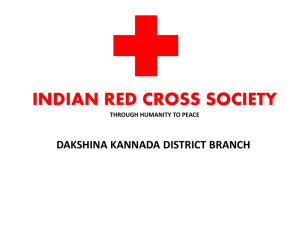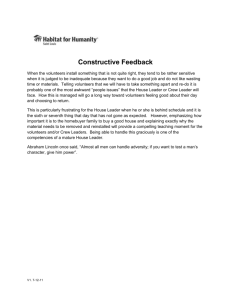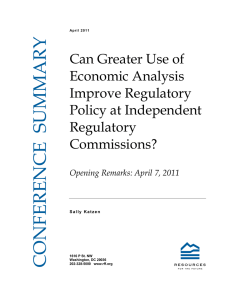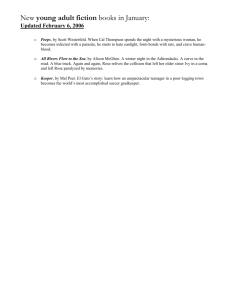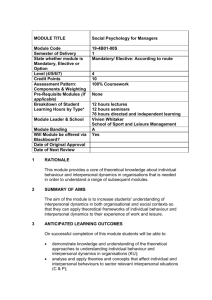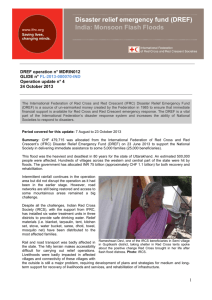A COMMUNITY-BASED INTERPERSONAL BEHAVIOR CHANGE
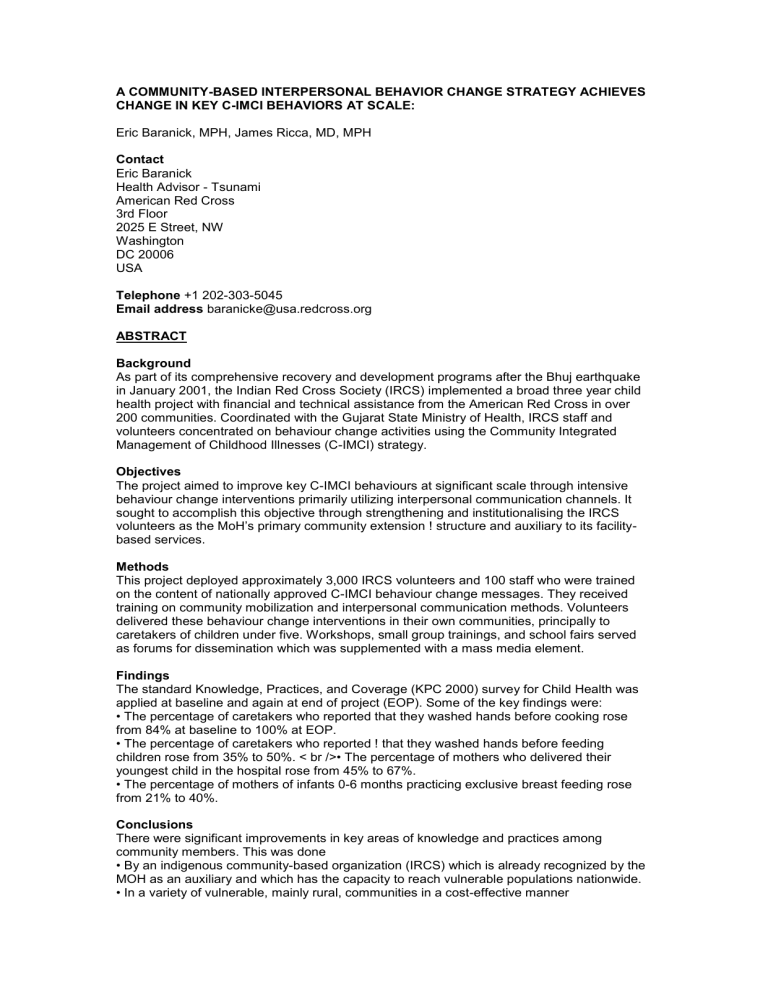
A COMMUNITY-BASED INTERPERSONAL BEHAVIOR CHANGE STRATEGY ACHIEVES
CHANGE IN KEY C-IMCI BEHAVIORS AT SCALE:
Eric Baranick, MPH, James Ricca, MD, MPH
Contact
Eric Baranick
Health Advisor - Tsunami
American Red Cross
3rd Floor
2025 E Street, NW
Washington
DC 20006
USA
Telephone +1 202-303-5045
Email address baranicke@usa.redcross.org
ABSTRACT
Background
As part of its comprehensive recovery and development programs after the Bhuj earthquake in January 2001, the Indian Red Cross Society (IRCS) implemented a broad three year child health project with financial and technical assistance from the American Red Cross in over
200 communities. Coordinated with the Gujarat State Ministry of Health, IRCS staff and volunteers concentrated on behaviour change activities using the Community Integrated
Management of Childhood Illnesses (C-IMCI) strategy.
Objectives
The project aimed to improve key C-IMCI behaviours at significant scale through intensive behaviour change interventions primarily utilizing interpersonal communication channels. It sought to accomplish this objective through strengthening and institutionalising the IRCS volunteers as the MoH’s primary community extension ! structure and auxiliary to its facilitybased services.
Methods
This project deployed approximately 3,000 IRCS volunteers and 100 staff who were trained on the content of nationally approved C-IMCI behaviour change messages. They received training on community mobilization and interpersonal communication methods. Volunteers delivered these behaviour change interventions in their own communities, principally to caretakers of children under five. Workshops, small group trainings, and school fairs served as forums for dissemination which was supplemented with a mass media element.
Findings
The standard Knowledge, Practices, and Coverage (KPC 2000) survey for Child Health was applied at baseline and again at end of project (EOP). Some of the key findings were:
• The percentage of caretakers who reported that they washed hands before cooking rose from 84% at baseline to 100% at EOP.
• The percentage of caretakers who reported ! that they washed hands before feeding children rose from 35% to 50%. < br />• The percentage of mothers who delivered their youngest child in the hospital rose from 45% to 67%.
• The percentage of mothers of infants 0-6 months practicing exclusive breast feeding rose from 21% to 40%.
Conclusions
There were significant improvements in key areas of knowledge and practices among community members. This was done
• By an indigenous community-based organization (IRCS) which is already recognized by the
MOH as an auxiliary and which has the capacity to reach vulnerable populations nationwide.
• In a variety of vulnerable, mainly rural, communities in a cost-effective manner
• In an integrated manner and at significant scale, without losing quality or diluting the effectiveness of key messages.
Policy Implications
Although Community IMCI is a key part of the overall IMCI strategy, Ministries of Health frequently fall short in providing broad community based programs. Rapid and effective scaleup of C-IMCI can be exponentially increased through indigenous, volunteer based civil society organizations. Red Cross and other non-governmental groups can fulfil this role.
